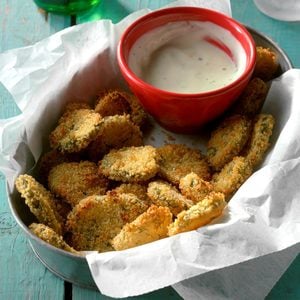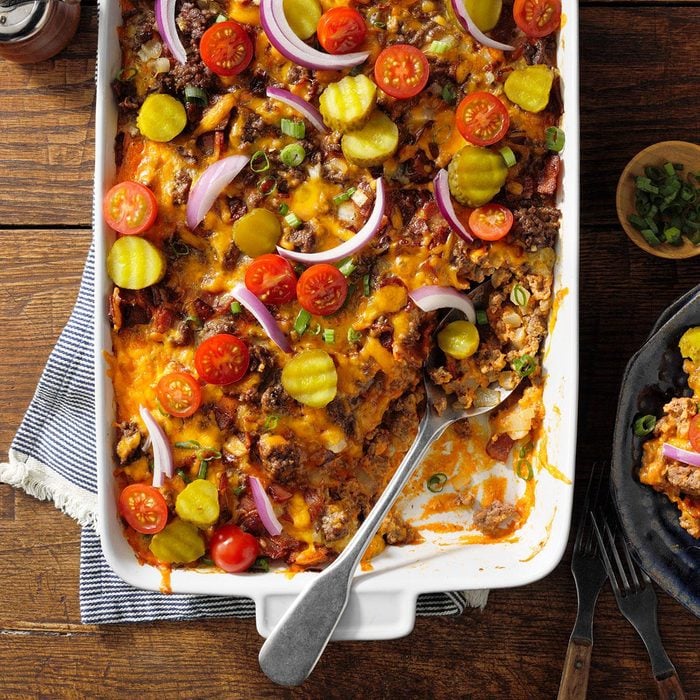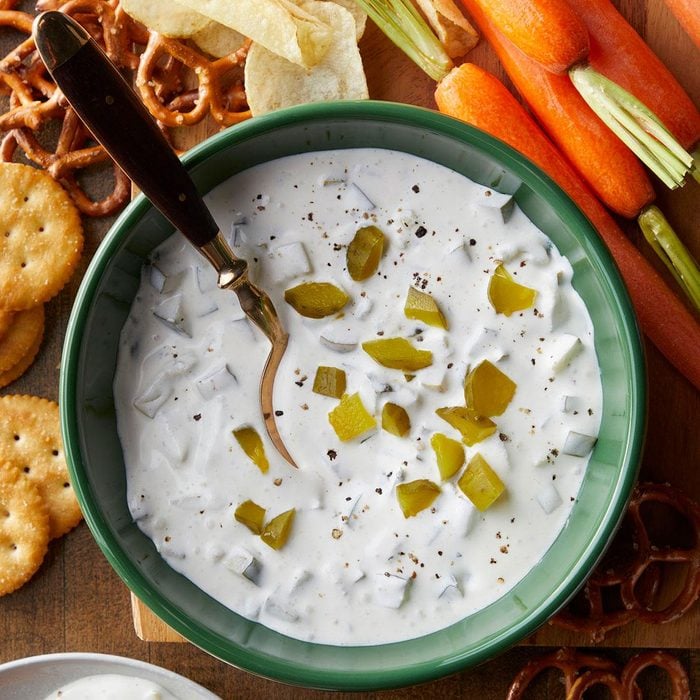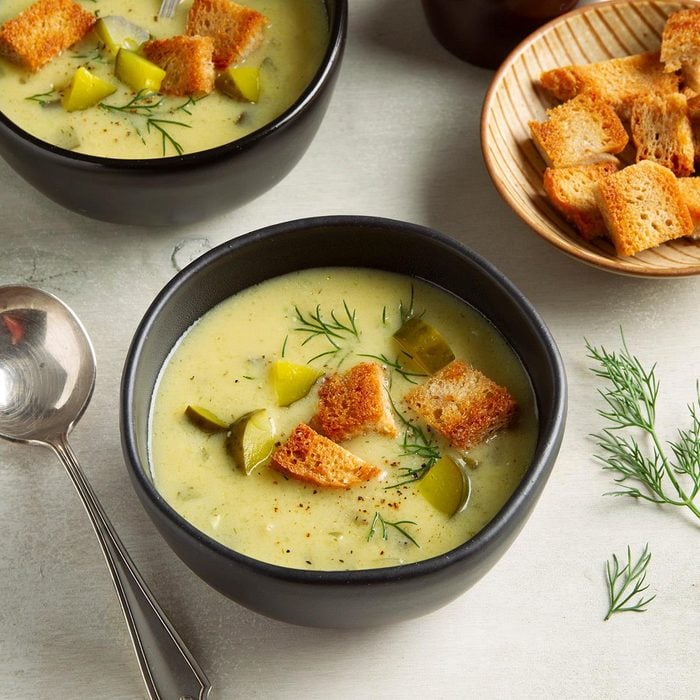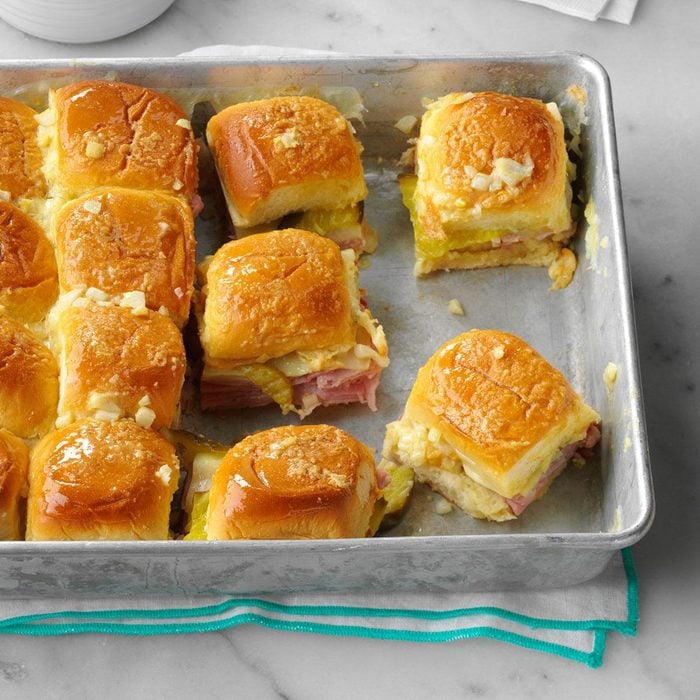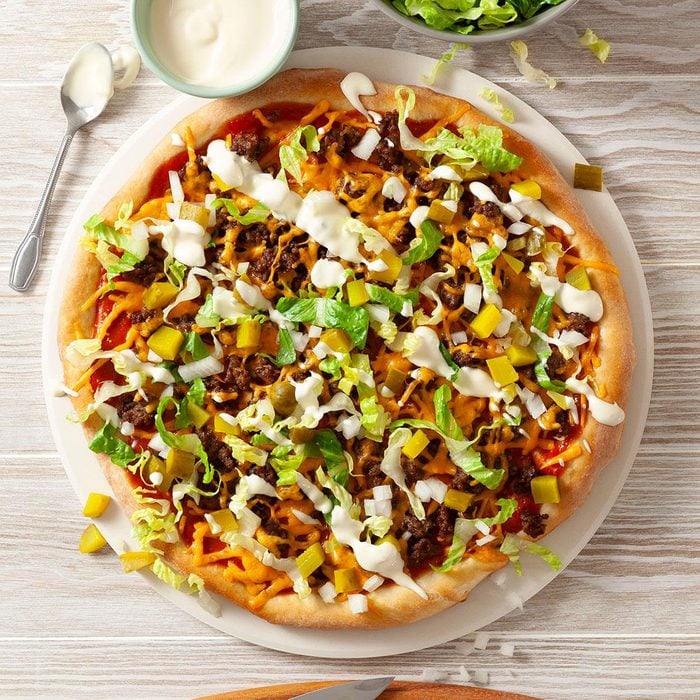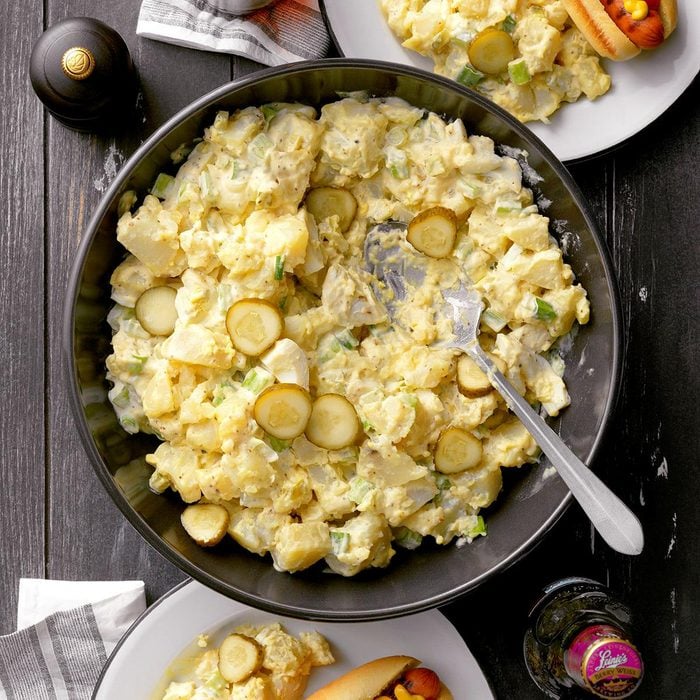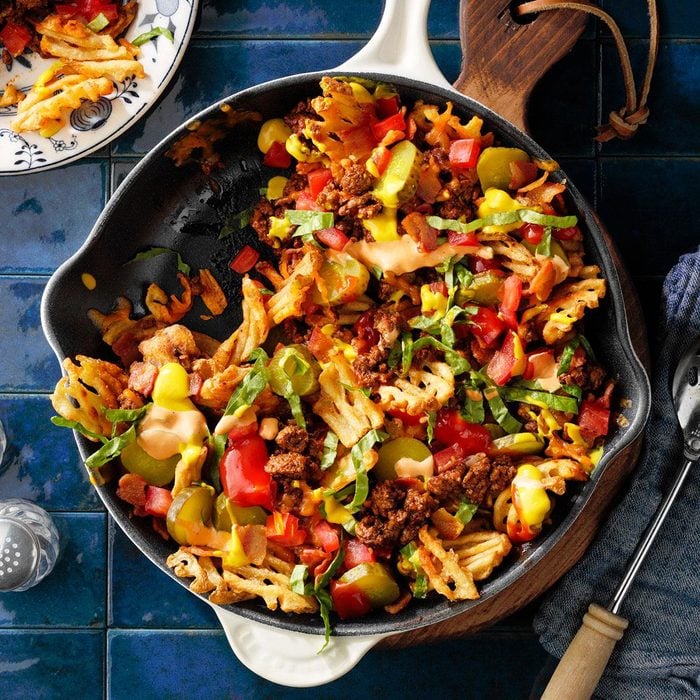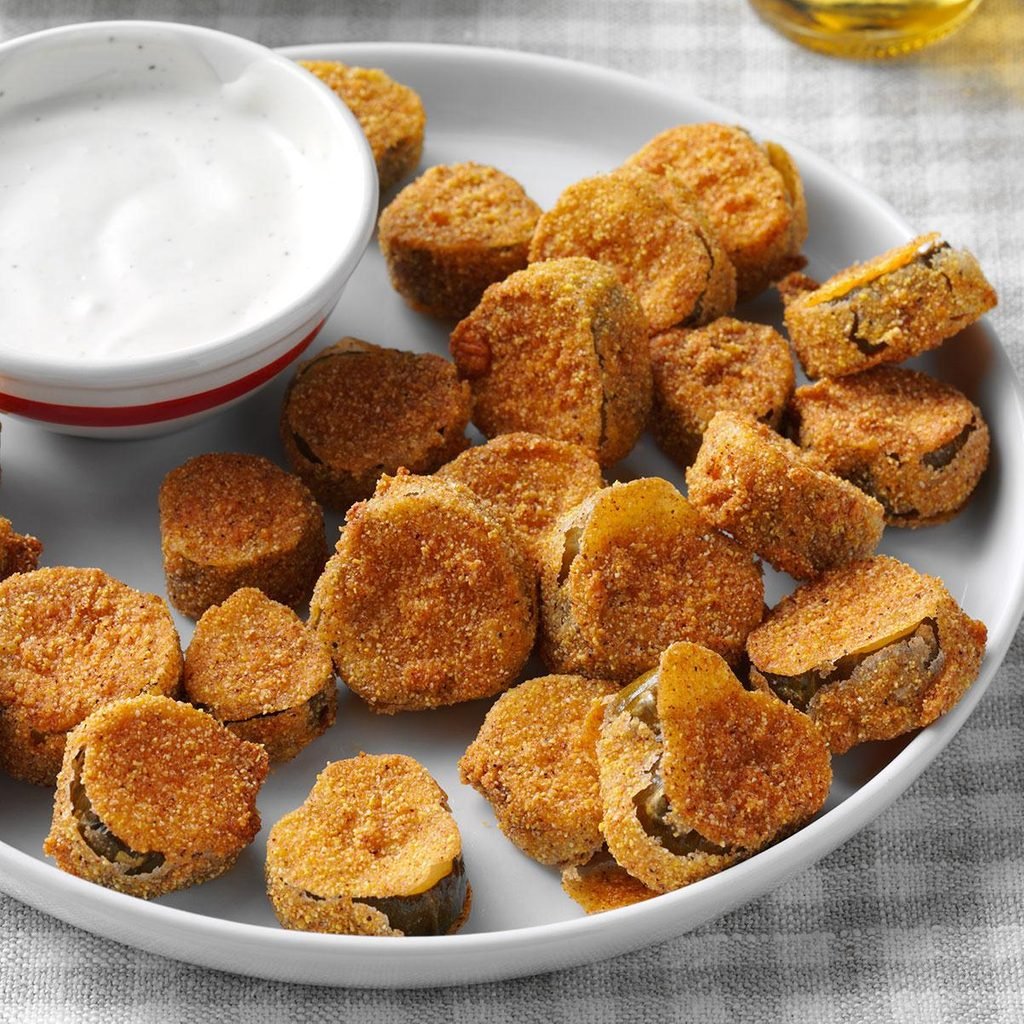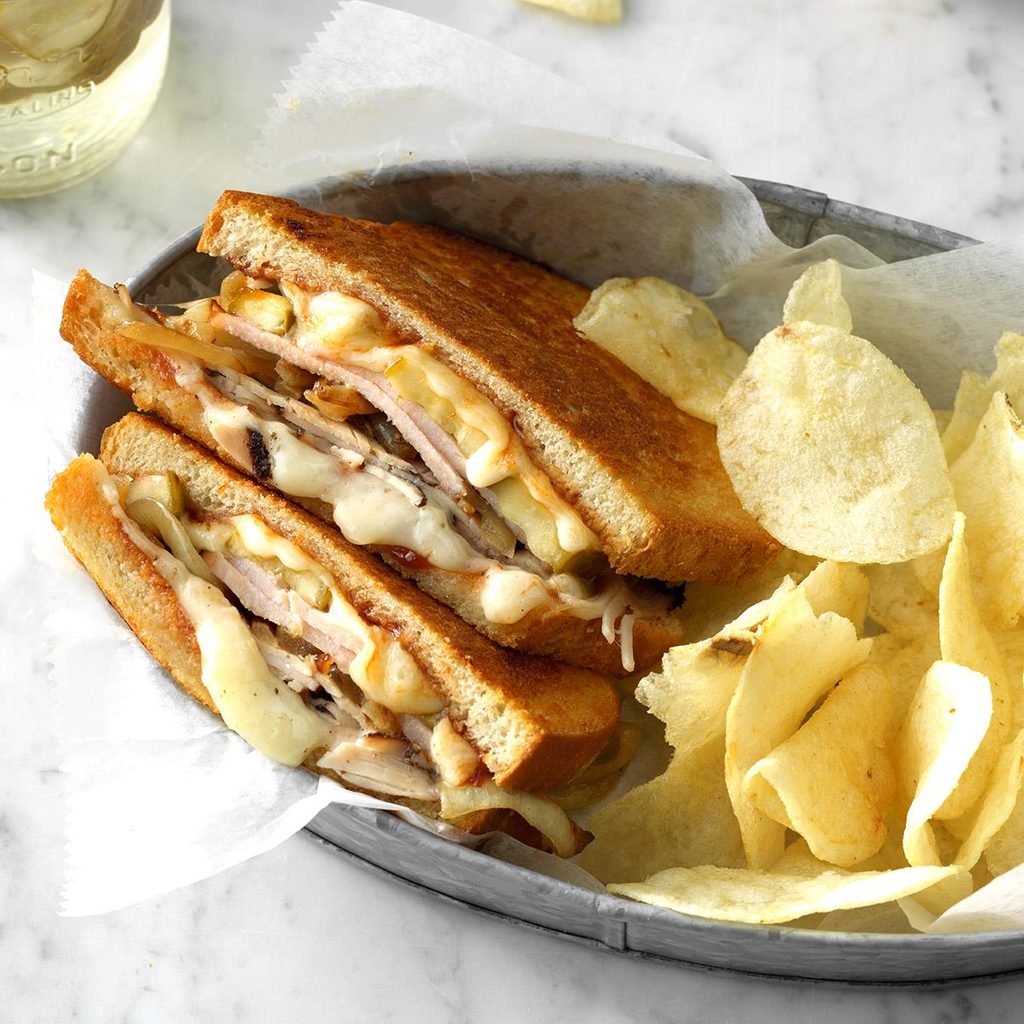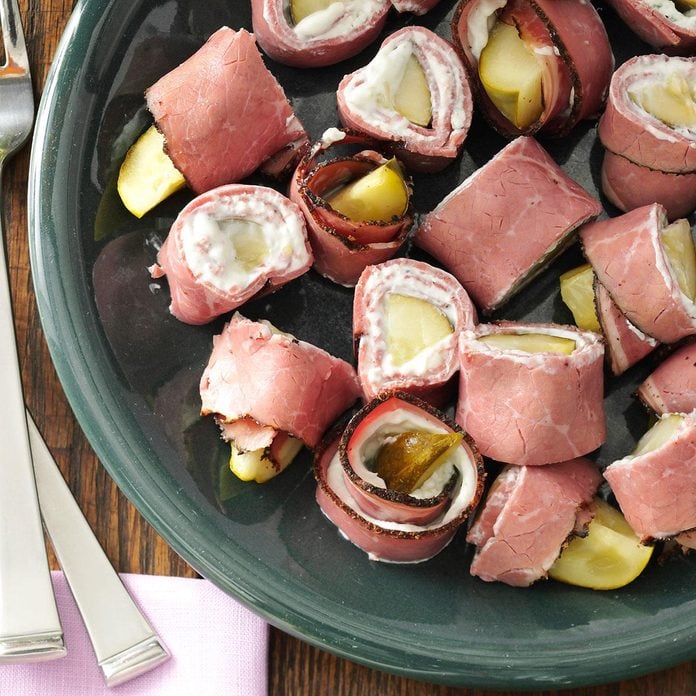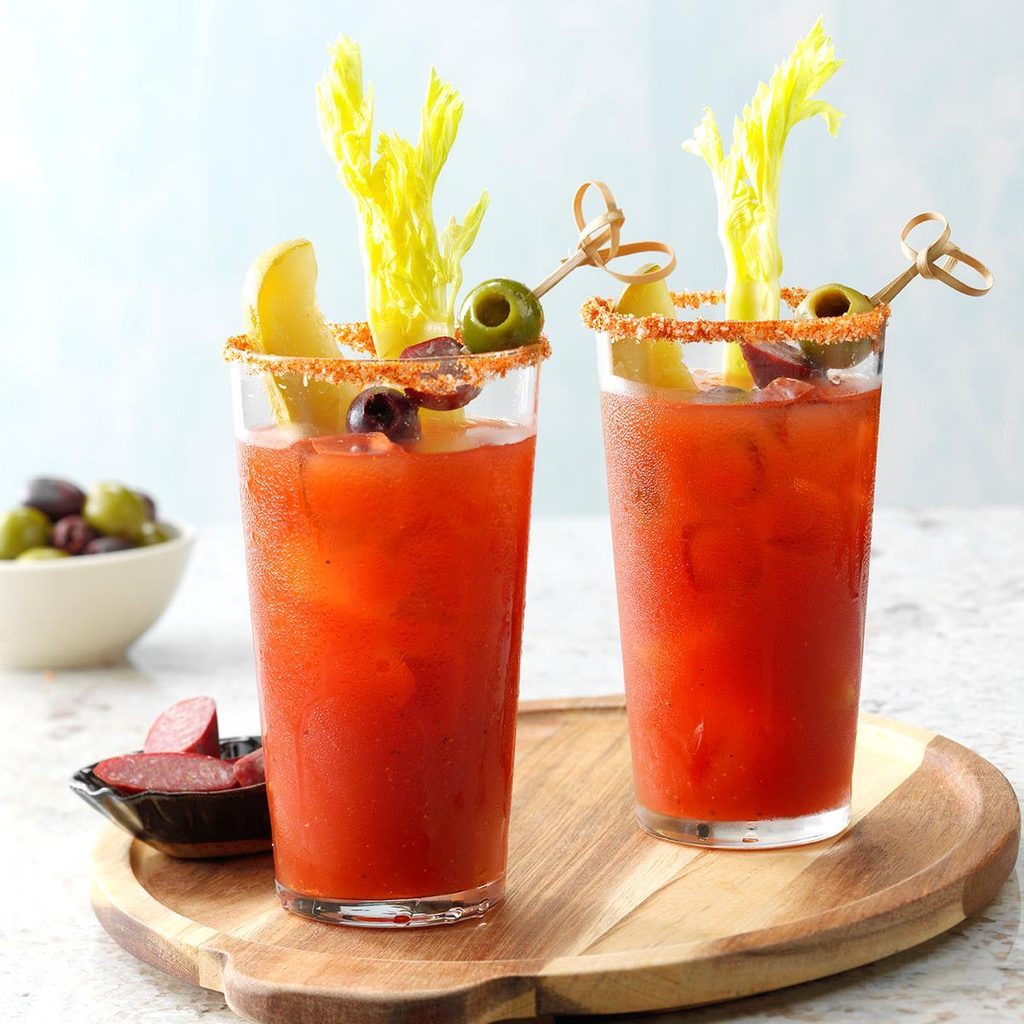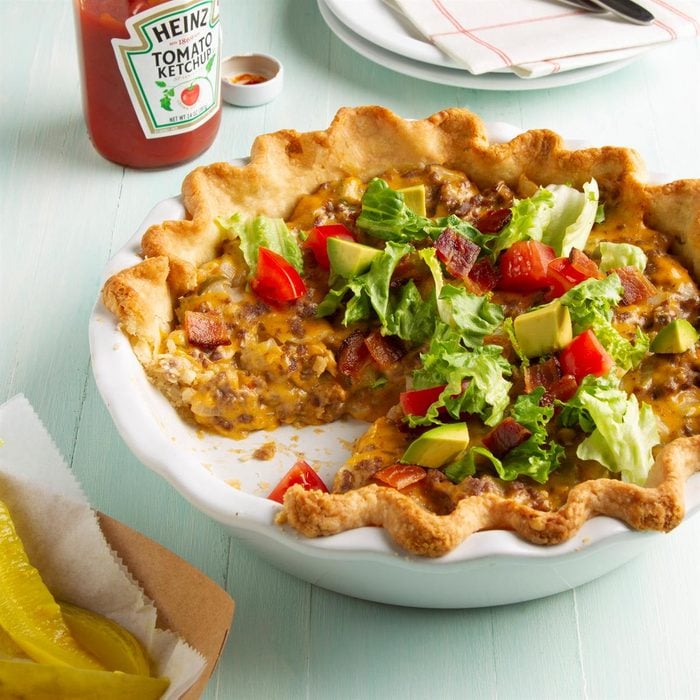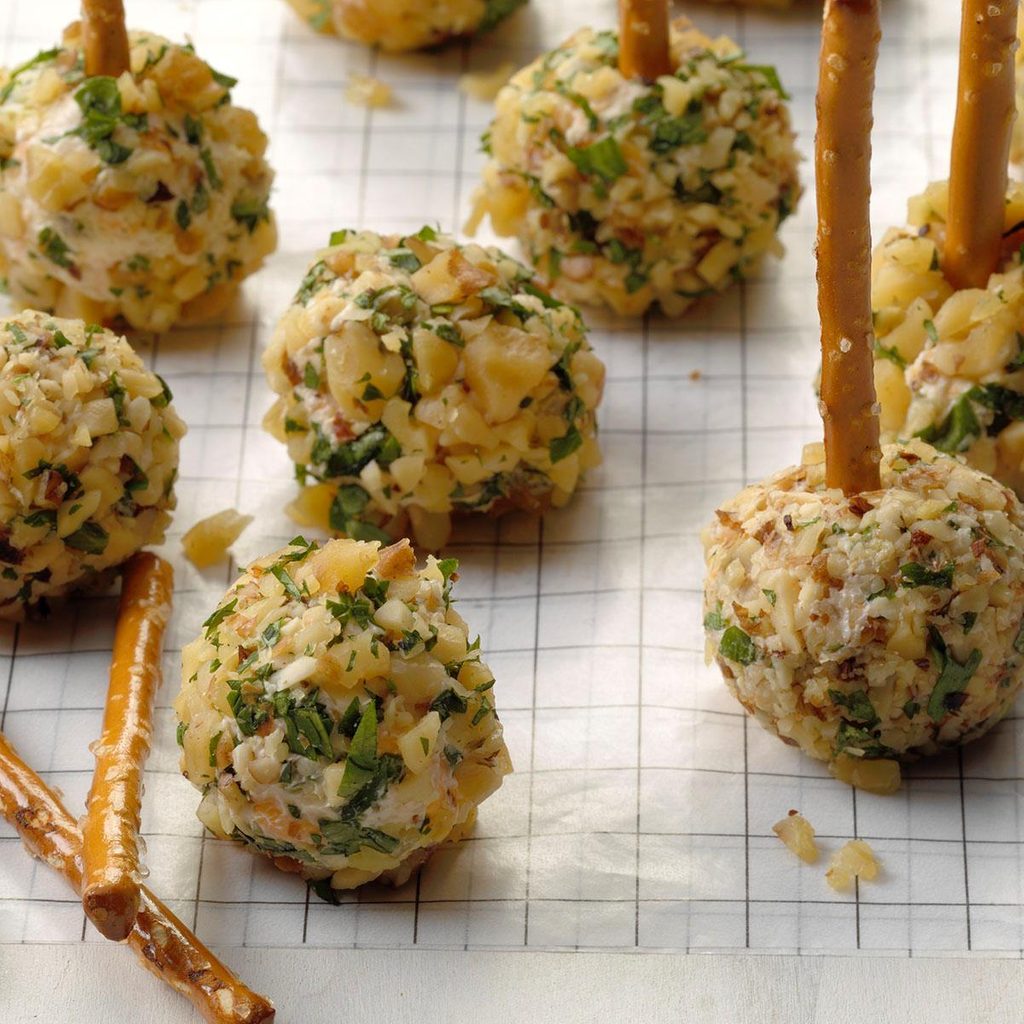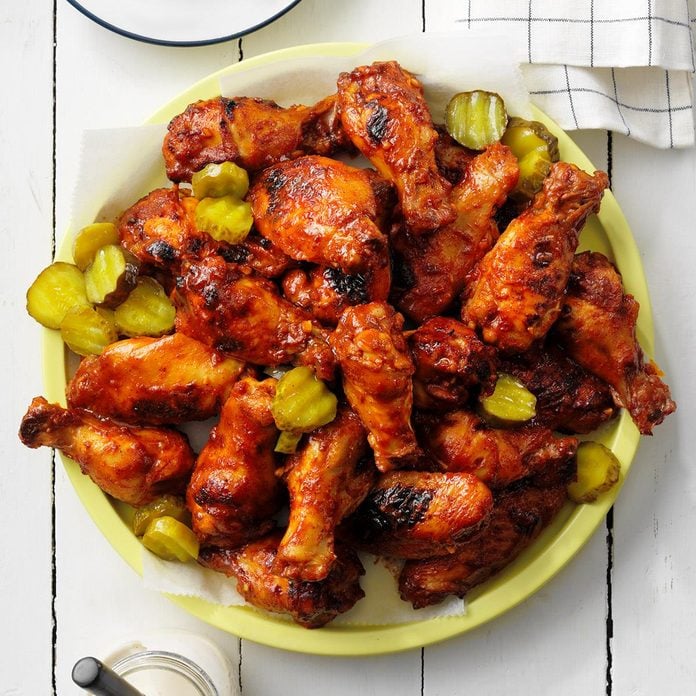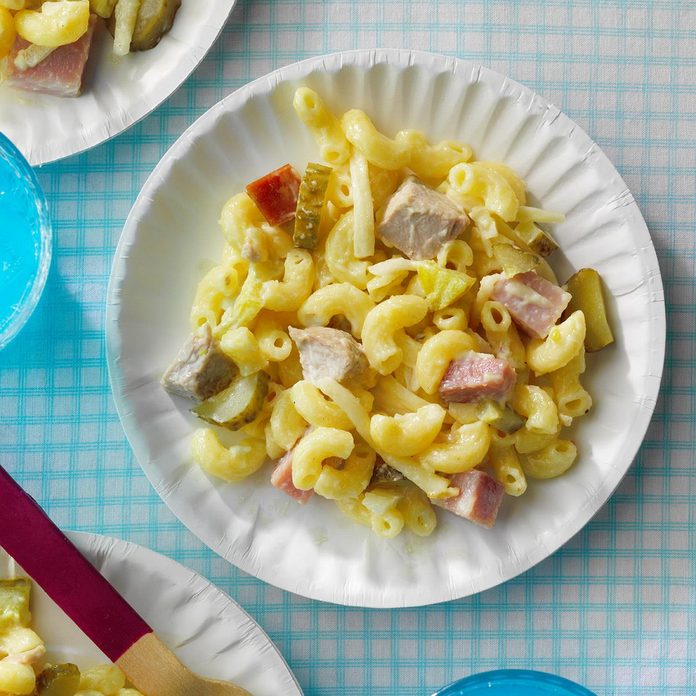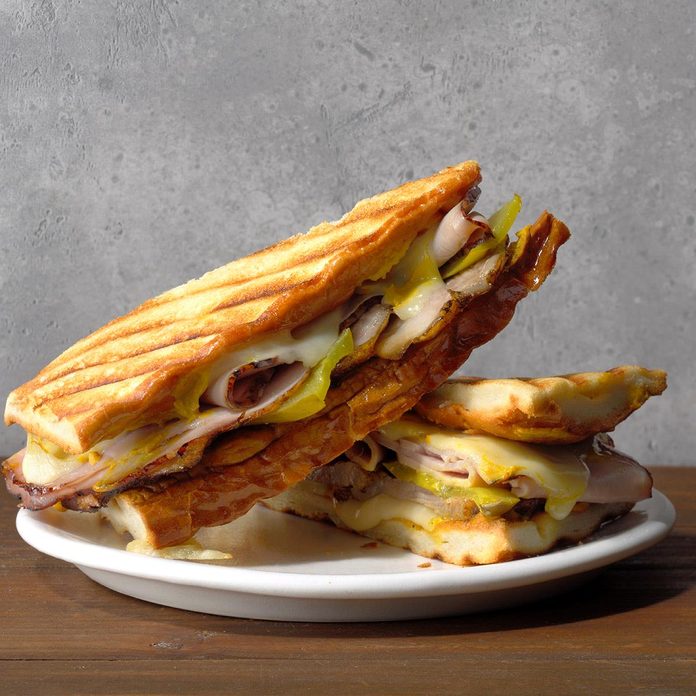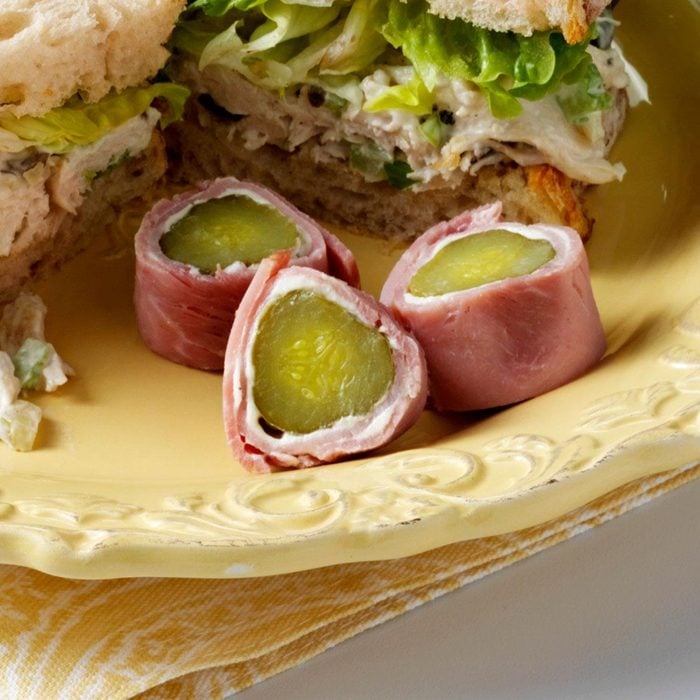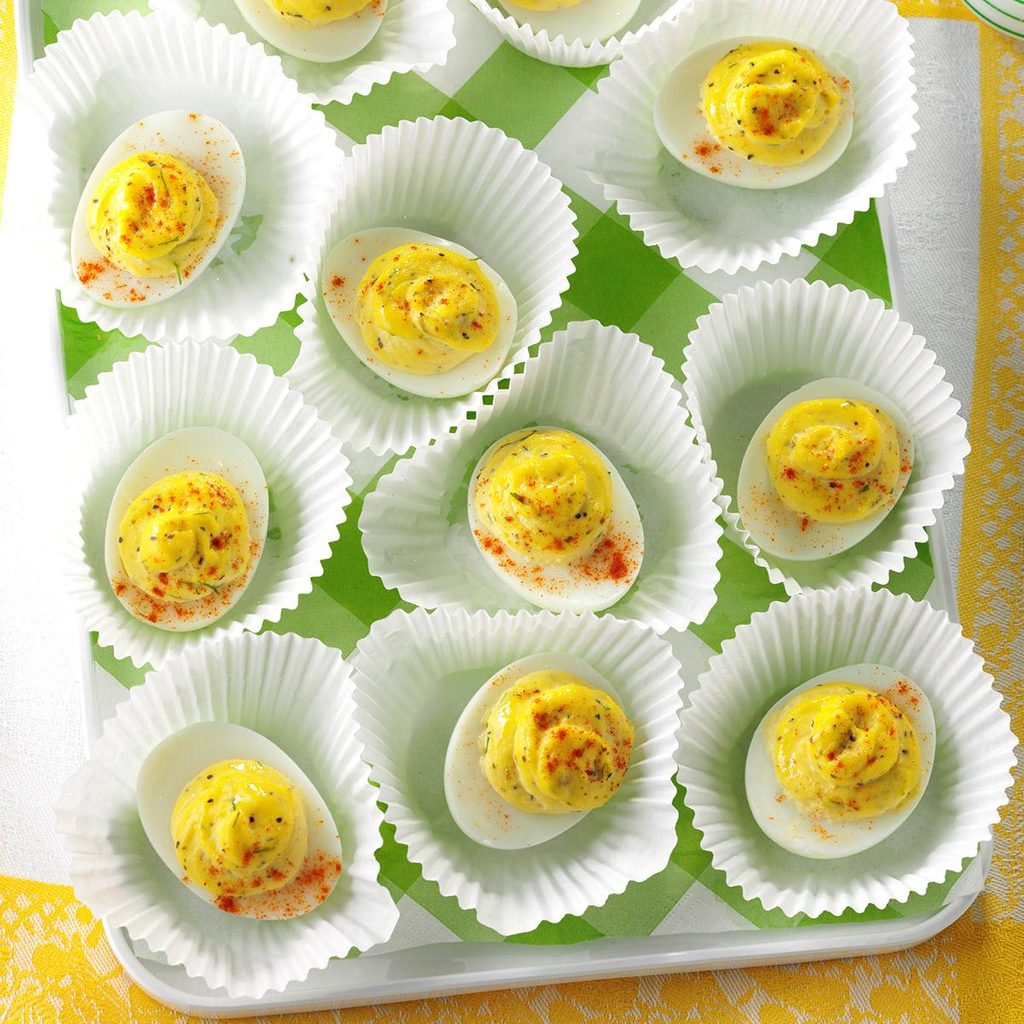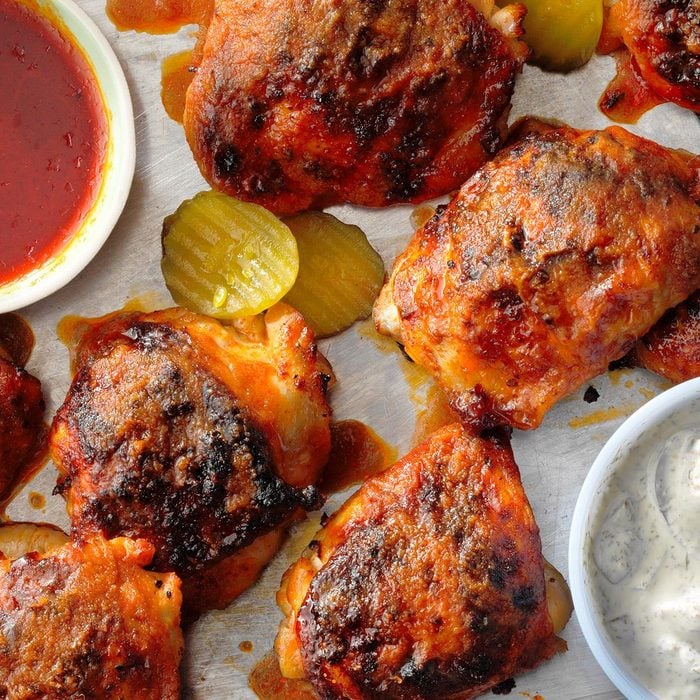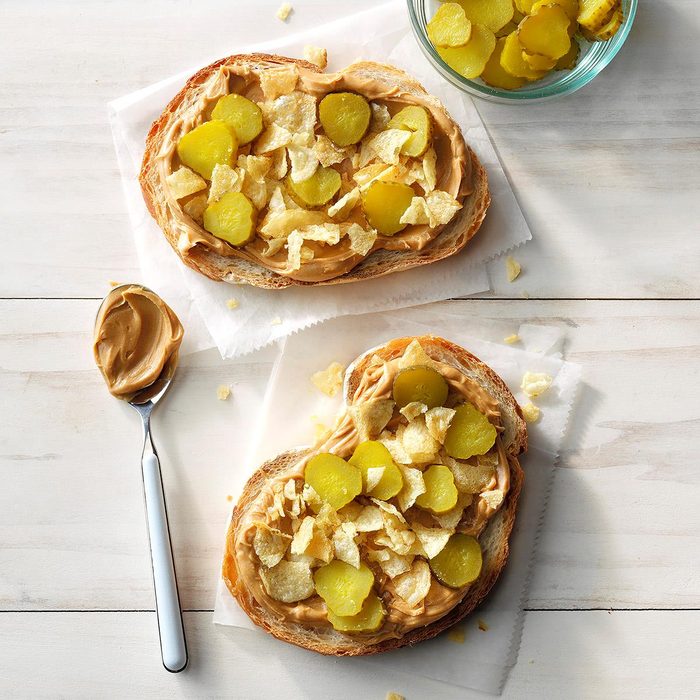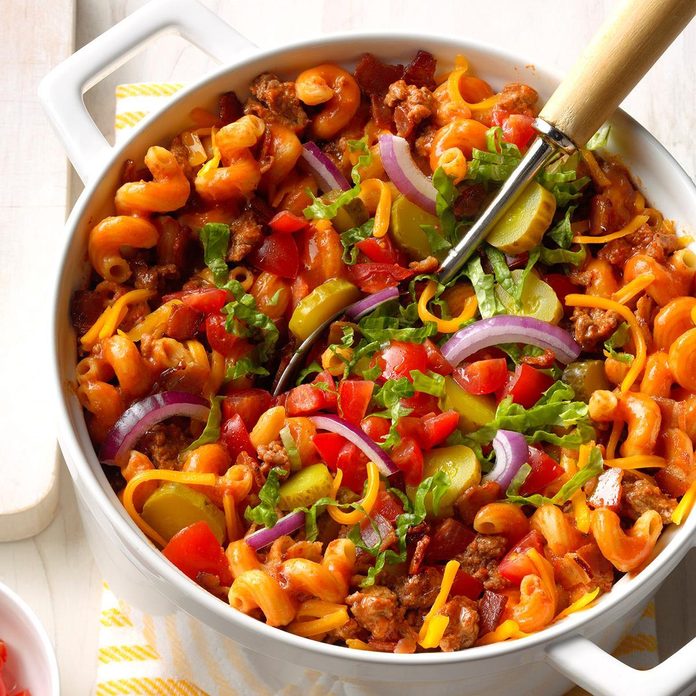The Ultimate Guide to Pickling
Updated: Apr. 16, 2024
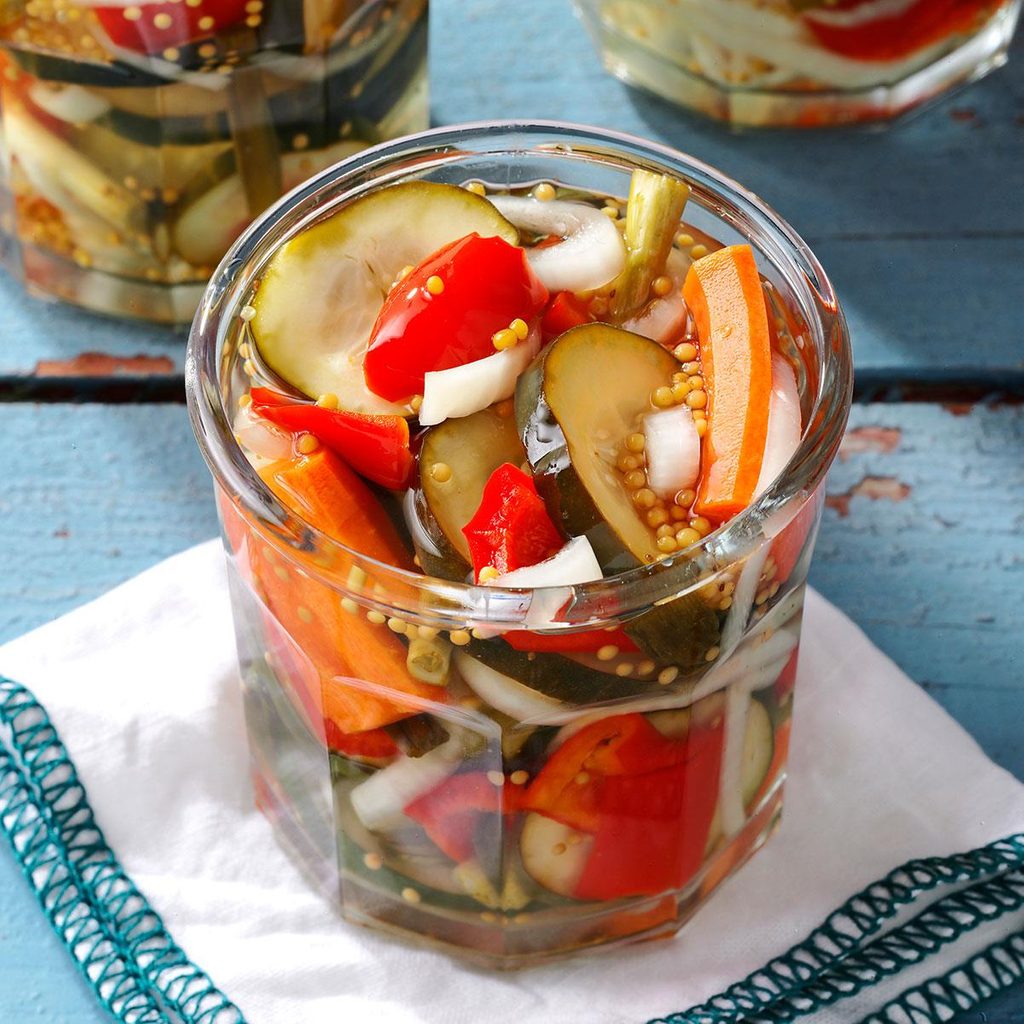
We break down everything there is to know about pickling.
Nothing compares to the crisp tang of a really good pickle. While store-bought pickled foods are tasty (read about our search for the best store-bought pickles out there), pickling your own produce at home is much more satisfying, whether it’s vegetables, fruits or both. Not only do homemade pickles taste fresher, but pickling at home is the perfect way to avoid waste when you’ve got a bumper crop or a fresh haul from the farmers market. Plus, it’s just plain fun!
We rounded up everything you need to know about how to make pickles, from the different types of pickles to the different ways to make them.
How Pickling Works
Learning the basic science behind how pickles are made—and getting an answer to the question: “What is a pickle?”—can make the concept a little less intimidating for beginners.
Simply, a pickle is food that’s been preserved in brine or vinegar. When we think of pickles, classic cucumber pickles come to mind first—but pickles can come from so many other vegetables and fruits, along with foods like pickled eggs and pickled garlic. Luckily, once you know how to pickle vegetables, the process for making other kinds of pickles is easy.
No matter what you’re pickling, the presence of acid increases in the food over time when it’s submerged in a brine with vinegar and salt. Because of this, bacteria doesn’t grow (or at least, not as fast as it would in fresh food), which is why pickled foods last for a long time. At the same time, the acidic brine transforms the texture and the taste of whatever you’re pickling.
Why You Should Pickle
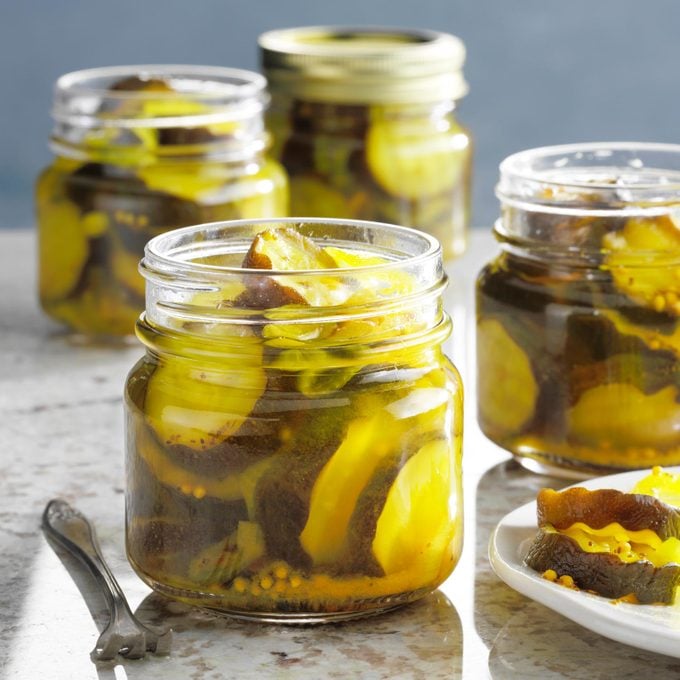
Pickling your food makes it last for much longer. But that’s not the only reason you should give pickling a shot. Depending on the type, pickles can be good for you. They’re a great source of vitamin K, which helps strengthen bones. Just keep in mind that sweet pickles have a different nutritional profile because there is sugar in the brine.
Did you know drinking pickle juice has benefits, too?
Types of Pickles
There are lots of types of pickles to know (and love)! Here are a few of the most common:
- Dill pickles are the most popular kind of pickle. The only requirement in dill pickles is that dill is a main ingredient—whether it’s dried or fresh.
- Sweet pickles are pickles made with a brine that contains sugar. They still taste like a pickle, just sweeter. Bread and butter pickles are a type of sweet pickle.
- Gherkin pickles are actually named after the variety of cucumber they’re made with. They’re much bumpier, smaller and crunchier than other cucumber varieties, which makes them a perfect snacking pickle. (The most common variety for pickling is Kirby cucumbers, although there are other options when it comes to the best cucumbers for pickling.)
- Sour pickles are a fermented in a mix of water and pickling salt. They take much longer to make, but they’re worth the extra patience.
A few other types of pickles include kosher, cornichons and Polish pickles.
What You Need for Pickling
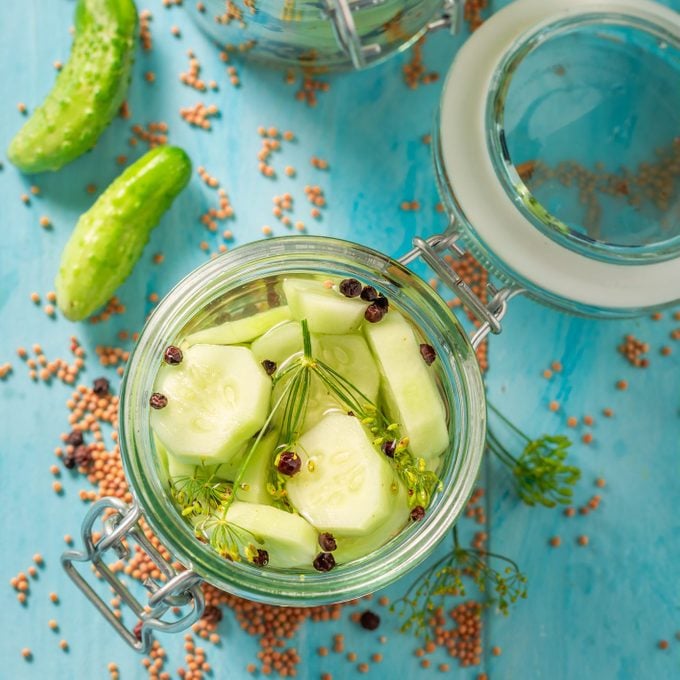
Pickles have three basic components: vegetables + brine + flavors. Of course, you’ll need different tools depending on the method of pickling you choose as well. Here’s an overview of how to can pickles—but remember, you should follow a specific pickled recipe when you make canned pickles, since canning has potential health and safety risks if done incorrectly.
1. Start with prepping the produce
First, choose what you’re going to pickle. The tastiest pickles are made from naturally firm and crisp vegetables. Some of our favorites are pickled summer squash, pickled carrots, pickled Brussels sprouts, and pickled red onions.
Leave slim vegetables and small fruits, like green beans, asparagus and strawberries, whole. Larger vegetables and fruits work best cut into smaller pieces like coins, slices, wedges or spears, which lets them better absorb the brine for more even flavoring. Always cut off the ends and stems, which contain an enzyme that can make pickles soggy.
Once you’ve chosen, washed and cut up the food you’re going to pickle, check if your recipe calls for raw- or cold-packing your produce into your jars, which means putting the raw produce right into clean jars.
The alternative is hot-packing (read on).
2. Next, make the brine
The brine, or pickling liquid, is the magic when making any and every kind of pickle. A basic pickling liquid or brine contains equal parts vinegar and water, plus salt. It has two functions: preserving the food and adding flavor. Ingredients like vinegar, salt and sugar all stave off spoilage and give the pickles a little bit of tang.
If the recipe calls for cold- or raw-packing, then you pour the brine over the produce in the jars. As they soak in the brine, they will soften slightly and take on tons of flavor.
Some recipes call for hot-packing, where you add the produce to the hot brine and simmer for a few minutes, and then pack the produce into the jars at the same time as the brine.
3. Add your favorite flavors
Here’s where the home pickler can have a lot of fun! While classic pickle flavors like dill are delicious, all kinds of flavors taste good with pickles. Just remember when adding herbs, spices and aromatics to pickled vegetables that their flavor will get stronger over time. Use this chart to experiment and create your own pickle recipes:
| Flavoring | How Many? | How to Add | Try These |
| Herbs | Add one type of herb. Adding more can muddy the flavors. | Use dried or fresh. No need to chop up; whole sprigs are fine. Simply place with the vegetables in the brine. | Bay leaves, basil, cilantro, oregano, thyme, rosemary, dill, tarragon |
| Spices | Use one or two spices. A hot spice and a fragrant spice usually work well together (e.g. red pepper flakes and coriander). | Toss them into the brine so the heat can bring out their flavors, then pour over the veggies. | Red pepper flakes, peppercorns, mustard seeds, cumin, coriander, peppercorns, chili powder, cayenne, fenugreek, fennel seeds |
| Aromatics | You can use as many aromatics as you wish, but their flavor will intensify over time. You can even pickle aromatics on their own for a sharp, distinctive flavor. | Slice aromatics with the main vegetable you’re pickling; pour the brine over all. | Garlic, sliced onions, spicy peppers such as jalapenos or bird’s eye chilies |
4. Can
After you pack your jars full of produce, flavoring and brine, it’s time to process and can the soon-to-be pickles.
Depending on the recipe, you may be using a water bath canner, a steam canner or a pressure canner. You can even make your own water bath canner at home if you have a big enough pot. Regardless of the recipe, this list of canning supplies includes everything you might need.
You need to wait a week or two to eat the pickles after canning and processing them. When you can pickles, they’re shelf-stable and you can store them unopened in the pantry.
Quick Pickling vs. Traditional Pickling
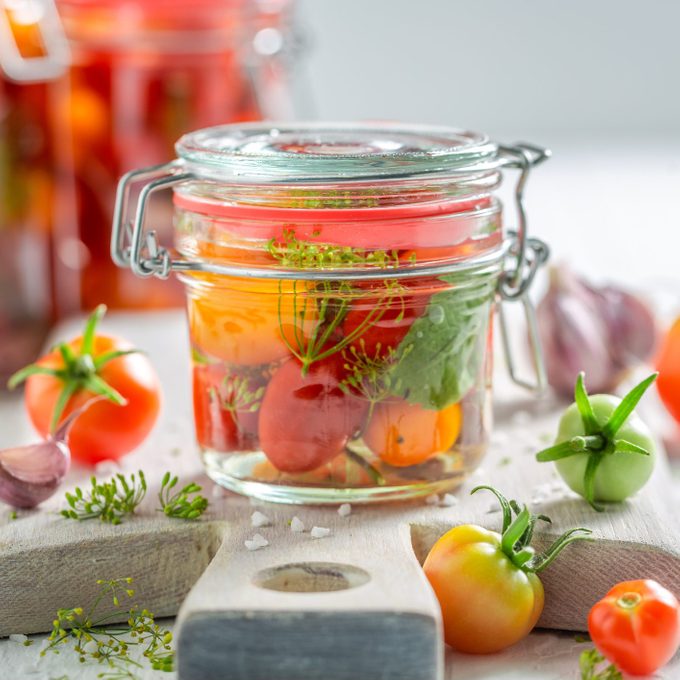
While traditional pickling includes canning produce so that it’s shelf-stable, you can also make quick refrigerator pickles, which take less patience and fewer tools.
After prepping the produce, most quick pickled recipes call for cold-packing the produce into jars, pouring the brine over the top, and letting them come to room temperature before storing them in the fridge. In a few hours, they’ll be ready for eating. Quick pickled red onions, quick pickled cauliflower and quick pickled jalapenos are just a few of the possibilities.
Pickling vs. Fermenting
Pickling is not the same as fermenting. While they’re both methods of preserving foods, it’s important to note the differences between the two:
- Pickling is done with an acidic brine, while fermenting is done primarily with salt.
- Fermented foods have gut-friendly probiotics, while pickled foods do not.
- Pickles need to be processed and canned to be shelf-stable, while the high heat from canning can kill off probiotics in some fermented foods.
Some classic examples of fermented foods include kimchi, kombucha and kefir. Like pickling, fermenting has health and safety concerns to keep in mind. Mold can develop on the surface of your fermenting foods if you check on them too much, and the container that holds your fermenting foods can’t have any scratches because the scratches could be holding bacteria that would then get into your food.
Pickles aren’t fermented, with one exception: sour pickles. Sour pickles are made with salt, water and spices instead of vinegar. After they sit for six weeks at room temperature, they turn fully sour.
Food Preservation and Pickling
Like we mentioned above, pickling helps preserve food for much longer than it would last otherwise—although the food still won’t last forever. Typically, quick refrigerator pickles will last for 1 to 2 weeks in the fridge. Unopened canned pickles will last about a year in the pantry, and a few months in the fridge once opened.
If you decide to can your pickles, there are additional health and safety risks to keep in mind. If you don’t do it right and fail to completely seal the jars, you risk getting botulism (a type of food poisoning).
Use your judgement and don’t eat from into a jar of pickles that is bulging or dented. Once you open the jar, double check that it doesn’t smell funny and that it doesn’t have a layer of foam on top. If you’re not sure about a jar of pickles, toss it.
Learn more about pickling safety.
Tips for Pickling
Ready to start pickling? Keep these tip in mind:
- Select the best-looking produce you can find. Fresh produce will keep its taste and texture better than older produce.
- Avoid using old canning recipes from Grandma. Some kinds of produce were more acidic years ago than they are today, which means that recipes were created to different heating standards than what is necessary for canning today.
- Table salt is not the same as pickling or canning salt—so don’t use them interchangeably in your pickle recipes. Read up on more common pickling mistakes to avoid.
Research contributed by Lauren Pahmeier, Taste of Home Associate Digital Editor, Caroline Stanko, Former Taste of Home Associate Digital Editor, Kelsey Mueller, Taste of Home Freelance Writer, and Matthew Hass, Former Taste of Home Test Cook
